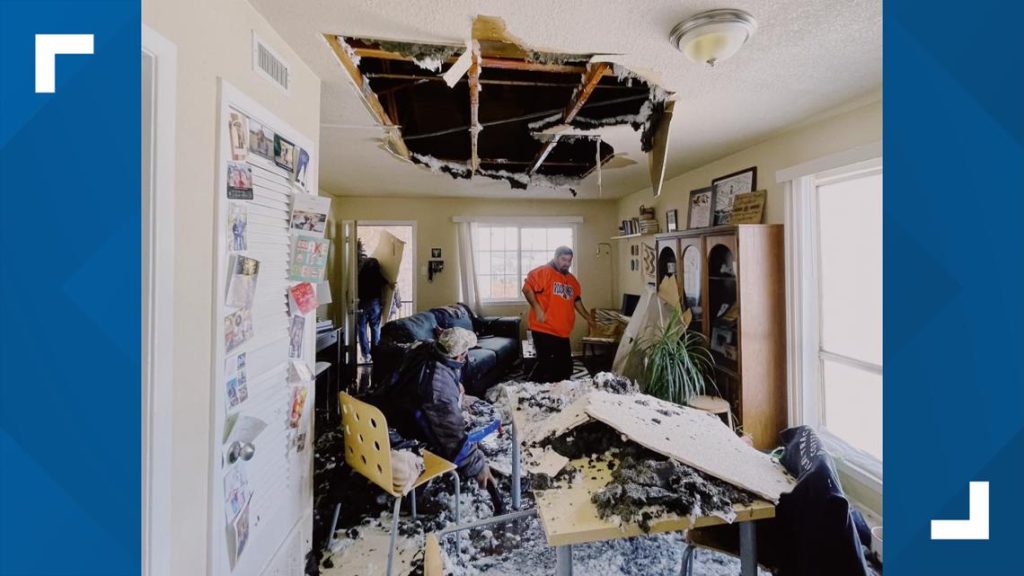Experiencing a pipe burst in the ceiling can be a homeowner’s nightmare. In this comprehensive guide, we’ll explore the intricacies of dealing with a “Pipe Burst In Ceiling,” unraveling the potential causes, immediate actions, and long-term solutions to navigate through this water-related crisis. Let’s delve into the world of pipe bursts and empower you with the knowledge to minimize damage and restore your home.

Pipe Burst In Ceiling: Decoding Causes and Consequences
Unveiling the Culprit: What Triggers a Pipe Burst in Ceiling
- Freezing Temperatures: The Winter MenaceIn colder climates, frozen pipes are a common cause of bursts. When water freezes within a pipe, it expands, exerting immense pressure. The force can lead to pipe rupture, particularly in unheated or poorly insulated areas.
- Corrosion and Aging: The Silent ErosionOver time, pipes can deteriorate due to corrosion, especially in older homes with aging plumbing systems. The gradual weakening of the pipe material can result in vulnerability, making it susceptible to bursting.
- High Water Pressure: The Pressure PredicamentExcessively high water pressure is another culprit behind pipe bursts. Constant high pressure can strain the pipes, causing them to weaken and eventually rupture. Installing a pressure regulator can mitigate this risk.
Managing the Crisis: Immediate Actions for a Pipe Burst in Ceiling
In this section, we’ll discuss crucial immediate actions to take when facing a pipe burst in the ceiling. Quick response is key to minimizing damage and potential long-term consequences.
1. Shut Off the Water Supply: Halting the Onslaught
The first and most urgent step is to shut off the water supply to the affected area. Locate the main water shut-off valve and turn it off to prevent further water from entering the burst pipe.
2. Drain Faucets: Reducing Pressure
Open faucets in the affected area to drain any remaining water and reduce pressure within the pipes. This helps alleviate stress on the burst section and minimizes the extent of water damage.
3. Remove Standing Water: Mitigating Secondary Damage
Use buckets, towels, or a wet/dry vacuum to remove standing water from the affected area. Quick water extraction is crucial to prevent additional damage to the ceiling, walls, and flooring.
Long-Term Solutions: Addressing Repairs and Restoration
1. Professional Assessment: Diagnosing the Extent
Engage the services of a professional plumber to assess the extent of the damage and identify the specific location of the pipe burst. Their expertise is crucial in determining the best course of action for repairs.
2. Pipe Replacement: Ensuring Structural Integrity
In cases where the burst pipe is severely damaged, replacement may be necessary. Modern materials, such as PEX or copper, offer durability and resistance to corrosion, providing a long-term solution to prevent future bursts.
3. Ceiling Repairs: Restoring Aesthetics
Once the plumbing repairs are complete, focus on restoring the damaged ceiling. Patching, repainting, and addressing any structural issues are essential to bring the affected area back to its pre-damage condition.
Preventive Measures: Safeguarding Against Future Pipe Bursts
1. Insulation: Guarding Against Freezing
Insulate pipes in unheated or vulnerable areas to prevent freezing. Adding insulation sleeves or wrapping pipes with heat tape can provide a protective barrier against the cold.
2. Regular Inspections: Staying Proactive
Conduct regular inspections of your plumbing system to identify signs of corrosion, wear, or potential weaknesses. Early detection allows for timely repairs or replacements, reducing the risk of future pipe bursts.
3. Maintain Proper Water Pressure: Balancing Act
Install a pressure regulator if your water pressure is consistently high. Maintaining optimal water pressure not only protects your pipes but also contributes to the longevity of your plumbing system.
Read too: Understanding Asbestos in Ceiling Plaster and Ensuring a Safe Home: Unveiling the Dangers
Conclusion: Bouncing Back from a Pipe Burst in Ceiling
While a pipe burst in the ceiling is undoubtedly a stressful situation, timely and informed actions can help you navigate through the crisis. By understanding the causes, taking immediate actions, and implementing long-term solutions, homeowners can minimize damage and restore their homes to a state of normalcy.
Remember, preparation and proactive measures are your allies in safeguarding against future pipe bursts. With the right knowledge and a swift response, you can bounce back from a pipe burst in the ceiling and fortify your home against similar incidents in the future.